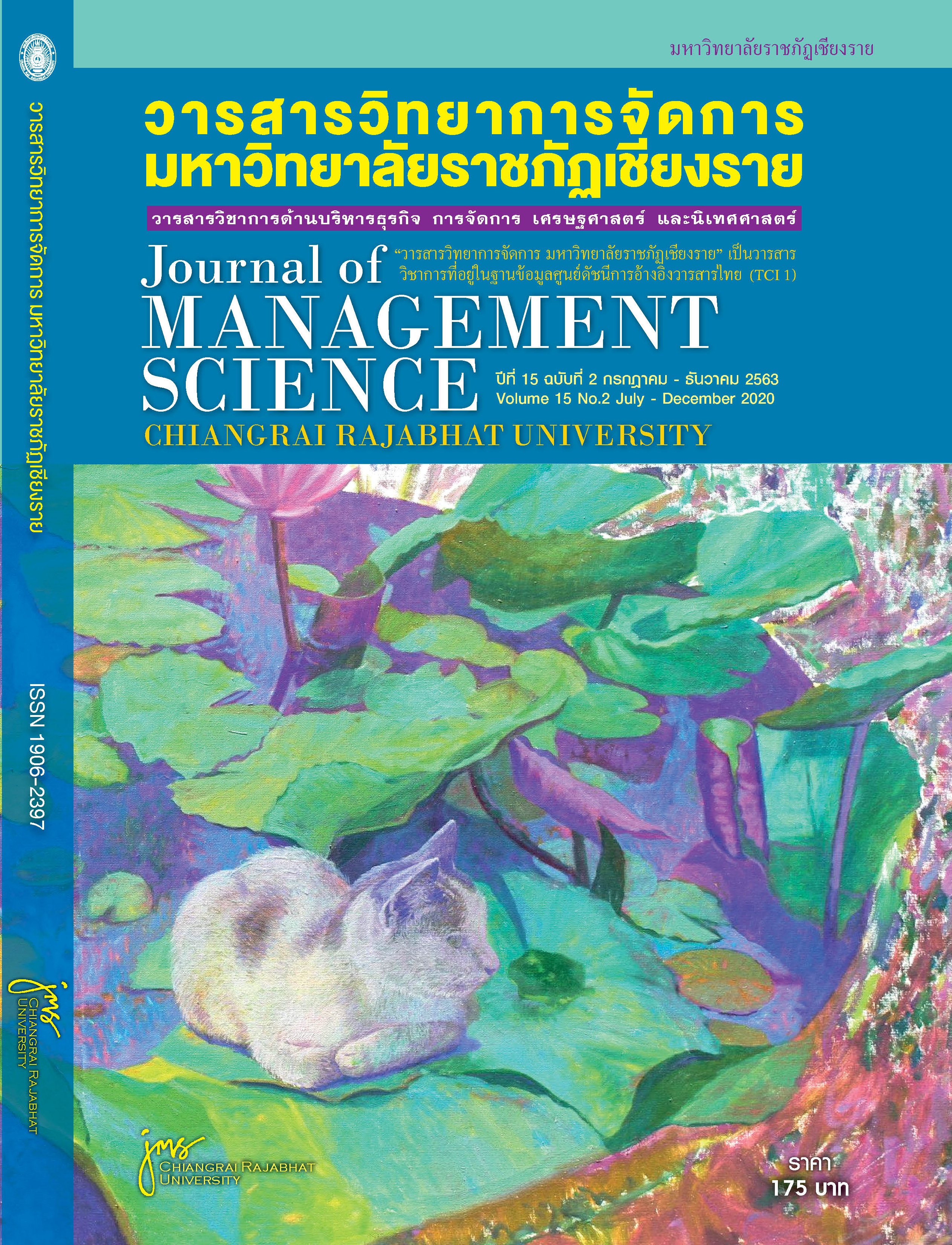Determinants of Calendar Spread of SET50 Index Futures
Main Article Content
Abstract
Speculation on the spreads of futures contracts with different expiry dates or calendar spreads may have good return, and it is less risky than outright positions. If determinants of the spreads are known, it may increase the chance of profitability. With the help of Vector Autoregression (VAR), this study tested the variables recommended by Hemler and Longstaff model and an empirical study including T-bill interest rate, market turnover, volatility of the underlying asset and time to maturity of contracts. It was found that all of the above variables, except the interest rate, were Granger-causes and leading indicators of the SET50 calendar spreads but depending on market conditions. By the way, explanatory powers of the variables were low. This perhaps resulted from missing of important factors, for example, behaviors of the market players.
Article Details
Views and opinions expressed in the journal do not necessarily reflect those of the editors.
References
Chang, C. & Lin, E. (2014). On the Determinants of Basis Spread for Taiwan Index Futures and the Role of
Speculators. Review of Pacific Basin Financial Markets and Policies. 17(1). 1-30.
Cornell, B. & French, K. R. (1983). The Pricing of Stock Index Futures. The Journal of Futures Markets.
(1). 1–14.
Hemler, M. L. & Longstaff. F. (1991). General Equilibrium Stock Index Futures Prices: Theory and Empirical
Evidence. Journal of Financial and Quantitative Analysis. 26(3). 287–308.
Hsu, H. & Wang, J. (2004). Price expectation and the pricing of stock index futures. Review of Quantitative
Finance and Accounting. 23(2). 167–184.
Kawaller, I. G., Koch, P. D. & Liu, L. (2002). Calendar Spreads, Outright Futures Positions, and Risk.
The Journal of Alternative Investments. 5(3). 59-74.
Lu, Y. (2011). The Pricing of Stock Index Future : A Case in Hong Kong’s Market. Master Thesis,
Copenhagen Business School, Copenhagen, Denmark.
Marcinkiewicz, E. (2013). An Empirical Study of the Determinants of Index Futures Basis: The Case
of Warsaw Stock Exchange. Doctorate Thesis, Lodz University of Technology, Poland.
Manu, K. S. (2015). A Comparison of Hemler & Longstaff Model and Cost of Carry Model: The Case of
Stock Index Futures. International Journal of Management. 6(1). 724-732.
Pornananchaikul, Vasuda. (2011). Spread Trading on SET50 Index Futures : Evidence in Thailand.
Master Thesis, Thammasat University, Thailand. (in Thai).
Roll, R., Schwartz, E. & Subrahmanyam, A. (2007). Liquidity and the Law of One Price: The Case of
the Futures-Cash Basis. Journal of Finance. 62(5). 2201-2234.


